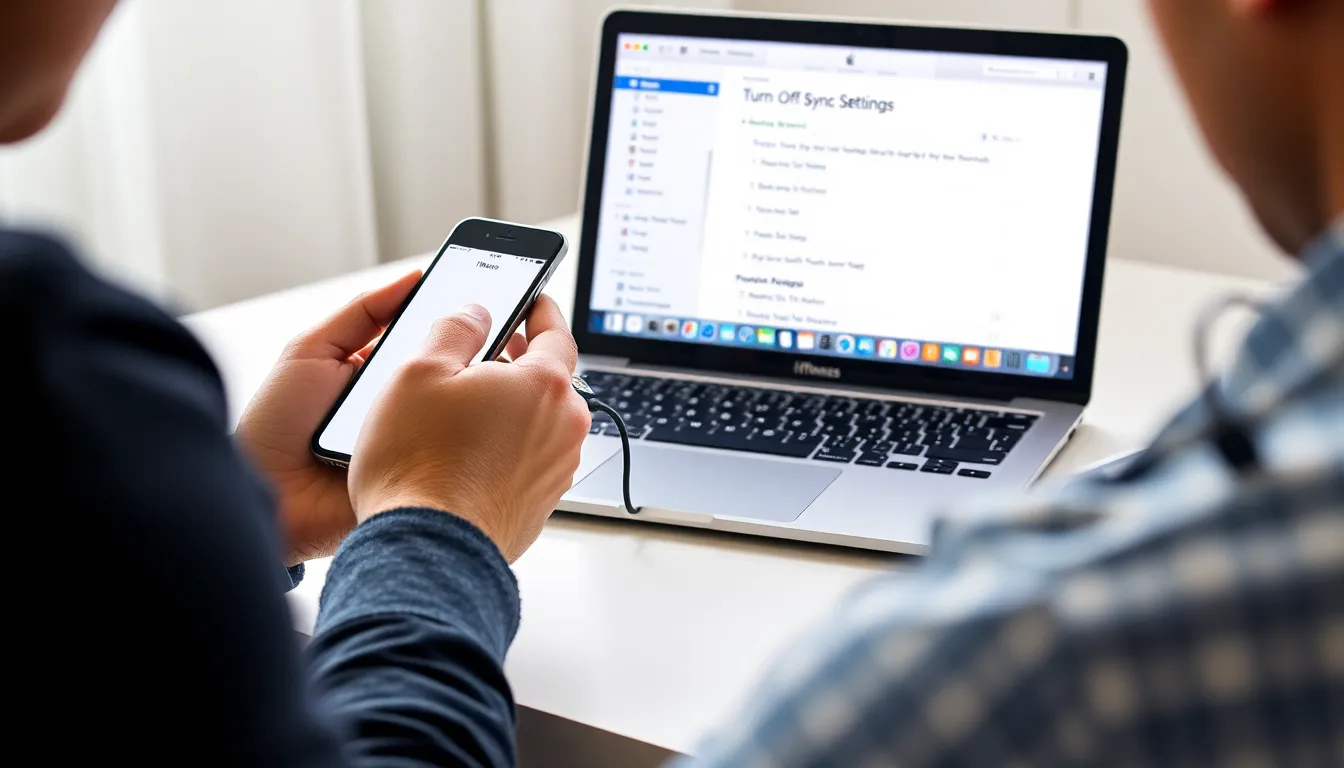Table of Contents
ToggleIn a world where your iPhone seems to have a mind of its own, managing sync settings can feel like a high-stakes game of cat and mouse. One minute you’re enjoying a peaceful moment, and the next, your phone’s syncing away like it’s auditioning for a tech reality show. If you’re tired of your device playing matchmaker with your data, it’s time to take control and learn how to turn off iPhone sync.
Understanding iPhone Sync
iPhone sync refers to the process by which an iPhone automatically communicates with other devices or services to update and manage data. This action helps ensure that contacts, photos, and other important information stay current across platforms.
What Is iPhone Sync?
iPhone sync involves connecting the device to iCloud or iTunes for data transfer. Users can synchronize music, photos, apps, and system settings through this process. Different services such as iCloud Drive, Apple Music, and App Store support syncing. Synchronization helps maintain a consistent environment across multiple devices, enhancing user experience.
Why Users May Want to Turn It Off
Users may choose to disable iPhone sync for various reasons. Excessive data usage can occur when syncing over cellular networks, leading to unexpected charges. Some may prefer to manage data manually for better control over what gets updated. Privacy concerns also drive users to turn off sync, creating boundaries for personal information sharing. Additionally, syncing can slow down device performance during updates, prompting users to pause these features for efficiency.
Steps to Turn Off iPhone Sync

Managing iPhone sync settings becomes essential for users seeking control over their devices. The following methods effectively disable sync features.
Turning Off Sync via iTunes
First, connect the iPhone to a computer using a USB cable. Open iTunes, then select the iPhone icon in the upper left corner. Next, click on the “Summary” tab. Uncheck options under “Automatically sync when this iPhone is connected” to stop automatic syncing. After making the changes, click “Apply” to save.
Disabling iCloud Sync
Begin by opening the “Settings” app on the iPhone. Tap on the user’s name at the top of the screen, then select “iCloud.” Toggle off options for specific data types like Photos, Contacts, and Calendars to prevent automatic syncing to iCloud. Confirm any prompts that appear to finalize the process.
Adjusting Settings on Your iPhone
Open “Settings” on the iPhone to find sync settings. Scroll down to “Mail” or “Contacts” and tap on each app to access sync options. Toggle off “Contacts” or “Mail” syncing to avoid automatic updates. Adjust settings for applications such as Notes or Reminders in the same manner for complete control over data synchronization.
Troubleshooting Sync Issues
Syncing problems on an iPhone can disrupt workflows. Identifying common sync issues helps users regain control over their data.
Common Sync Problems
Frequent issues include slow sync speeds and data not updating. Users often face problems like incomplete backups or missing contacts and photos. Some experience continuous notifications about sync status, which may lead to frustration. Battery drain during syncing can also cause concern. Lastly, incompatible software versions may prevent proper syncing altogether.
Solutions to Sync Errors
To resolve sync errors, users can start by restarting their iPhone. Checking the network connection ensures stable performance. iCloud settings require explicit attention; toggling sync options might help refresh the connection. Updating the iOS version corrects many software-related issues. Users should also ensure that they have sufficient storage in iCloud or iTunes for successful backups. When necessary, disabling and re-enabling sync for specific apps like Mail or Photos can restore functionality.
Taking control of iPhone sync settings can significantly enhance the user experience. By disabling automatic sync features users can manage their data more effectively and address privacy concerns. It’s essential to understand the various options available for turning off sync through iTunes and iCloud as well as individual app settings.
This proactive approach helps prevent unwanted data usage and improves device performance. Users can troubleshoot any sync-related issues that arise and ensure their iPhone operates smoothly. Ultimately gaining control over sync settings empowers users to tailor their device to meet their specific needs and preferences.







